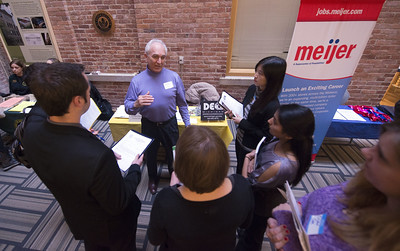According to a recent survey by the Employers’ Association, a Grand Rapids based non-profit, wages in West Michigan rose by more than 5% in 2022. Employers on the state’s west side raised their entry level pay to remain competitive in a tight labor market. This has implications for community college enrollment.
Higher wages in the job market complicate the decision to return to school. When people can make a living wage without a degree, there is little incentive to return to the classroom. If entry level wages remain high, fewer recent high school graduates may find it necessary or desirable to enter college.
According to the EA survey, starting wages in 2022 rose nearly a full percentage point over 2021 starting pay, which rose nearly 4.5% from 2020. Prior to 2020, annual wage increases remained comparatively low – in the 2% range.
Entry level wages weren’t the only area of focus for West Michigan employers. The EA survey showed that wages for existing employees also rose similarly. EA collected salary data from about 300 employers in Kent and Ottawa counties. This will also impact community college enrollment. Limited pay raises and growth opportunities often provide incentive for workers to return to school. With wages for existing employees rising, there is less motivation to seek additional training or education credentials.
Changes to Michigan’s Minimum Wage laws may complicate the community college enrollment picture even further. The Michigan Court of Appeals is set to hear arguments in December on a Court of Claims ruling that invalidated the Legislature’s “catch-and-kill” move to limit the state’s minimum wage increase. If the Court of Claims ruling holds up, employers may be forced to raise employee pay beginning in early 2023.
Community college enrollment will continue to suffer
There is little incentive to seek a community college degree when the effort to obtain it yields only a few dollars per hour more than a high school diploma. After years of stagnation, rising entry level wages have created opportunities for workers who – under different circumstances – would have boosted community college enrollment.
According to the EA survey, nearly 30% of entry-level positions in 2021 in West Michigan paid less than $16 per hour In 2022, employers reported that only about 5% of their entry level positions paid less than $16. To remain competitive, employers trying to fill entry-level positions are competing with each other on wages. The unemployment rate in September in Grand Rapids was 3.2%.
Washtenaw County’s unemployment picture is similar. Overall unemployment in the county was 3.3% for September. Within the county, the City of Ann Arbor logged the lowest unemployment rate at 2.8%, followed by Pittsfield Township at 3.1%. Ypsilanti Township had an unemployment rate of 5.0%.
The lower the unemployment rate goes, the harder it will be for employers to fill open positions. Competition for workers will prompt employers to compete on wages, which will continue to depress community college enrollment.
I have said this before. WCC does not compete with other educational institutions as much as it competes with the job market. In a conversation regarding tuition and fee increases, one Trustee wanted to know what other alternatives students had to community college enrollment. His position was that WCC compared favorably to UM and EMU. His exact question was, “Where are we going to lose them to?”
WCC is losing students to local employers who don’t care whether a prospective worker does or doesn’t have a degree.
That’s who you’re losing them to.
Photo Credit: University of Michigan School for Sustainability and the Environment , via Flickr









